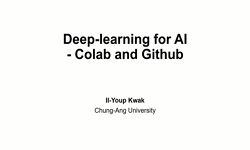본 연구는 영상검지기에서 수집되는 정보를 활용하여 딥러닝 기반으로 대기행렬길이를 예 측하는 모형을 개발하였다. 그리고 통계적 기법인 다중회귀 모형을 추정하여 평균절대오차와 평...
http://chineseinput.net/에서 pinyin(병음)방식으로 중국어를 변환할 수 있습니다.
변환된 중국어를 복사하여 사용하시면 됩니다.
- 中文 을 입력하시려면 zhongwen을 입력하시고 space를누르시면됩니다.
- 北京 을 입력하시려면 beijing을 입력하시고 space를 누르시면 됩니다.
https://www.riss.kr/link?id=A107954229
- 저자
- 발행기관
- 학술지명
- 권호사항
-
발행연도
2021
-
작성언어
Korean
-
주제어
다중회귀 ; 딥러닝 ; LSTM ; 대기행렬길이 ; 예측 ; Multiple Regression ; Deep Learning ; LSTM ; Queue Length ; Forecasting
-
KDC
534.04
-
등재정보
KCI등재
-
자료형태
학술저널
-
수록면
26-36(11쪽)
-
KCI 피인용횟수
0
- DOI식별코드
- 제공처
- 소장기관
-
0
상세조회 -
0
다운로드
부가정보
국문 초록 (Abstract)
본 연구는 영상검지기에서 수집되는 정보를 활용하여 딥러닝 기반으로 대기행렬길이를 예 측하는 모형을 개발하였다. 그리고 통계적 기법인 다중회귀 모형을 추정하여 평균절대오차와 평균제곱근오차의 두 지표를 이용하여 비교평가하였다. 다중회귀분석 결과, 시간, 요일, 점유율, 버스 교통량이 유효한 변수로 도출되었고, 이 중에서 독립변수들의 종속변수에 대한 영향력은 점유율이 가장 큰 것으로 나타났다. 딥러닝 최적 모형 은 은닉층이 4겹, Look Back이 6으로 결정되었고, 평균절대오차와 평균제곱근오차가 6.34와 8.99로 나타났다. 그리고 두 모형을 평가한 결과, 다중회귀 모형과 딥러닝 모형의 평균절대오차 는 각각 13.65와 6.44, 평균제곱근오차는 각각 19.10과 9.11로 계산되었다. 이는 딥러닝 모형이 다중회귀 모형과 비교하여 평균절대오차가 52.8%, 평균제곱근오차는 52.3% 감소된 결과이다.
다국어 초록 (Multilingual Abstract)
In this study, a deep learning model for predicting the queue length was developed using the information collected from the image detector. Then, a multiple regression analysis model, a statistical technique, was derived and compared using two indices...
In this study, a deep learning model for predicting the queue length was developed using the information collected from the image detector. Then, a multiple regression analysis model, a statistical technique, was derived and compared using two indices of mean absolute error(MAE) and root mean square error(RMSE). From the results of multiple regression analysis, time, day of the week, occupancy, and bus traffic were found to be statistically significant variables. Occupancy showed the most strong impact on the queue length among the variables. For the optimal deep learning model, 4 hidden layers and 6 lookback were determined, and MAE and RMSE were 6.34 and 8.99. As a result of evaluating the two models, the MAE of the multiple regression model and the deep learning model were 13.65 and 6.44, respectively, and the RMSE were 19.10 and 9.11, respectively. The deep learning model reduced the MAE by 52.8% and the RMSE by 52.3% compared to the multiple regression model.
목차 (Table of Contents)
- 요약
- ABSTRACT
- Ⅰ. 서론
- 1. 개요
- Ⅱ. 이론적 배경
- 요약
- ABSTRACT
- Ⅰ. 서론
- 1. 개요
- Ⅱ. 이론적 배경
- 1. 선행 연구 고찰
- Ⅲ. 자료 수집 및 분석
- 1. 대상 지점 선정 및 자료 수집
- 2. 최종 데이터 셋 구성
- 3. 데이터 기초분석
- Ⅳ. 모형 구축 및 평가
- 1. 다중회귀분석 모형 구축
- 2. 딥러닝 모형 구축
- 3. 모형 비교 평가 결과
- Ⅴ. 결론
- ACKNOWLEDGEMENTS
- REFERENCES
참고문헌 (Reference)
1 기병국, "신경망 이론과 유전자 알고리즘을 결합한 신호교차로 대기행렬 예측기법에 관한 연구" 대한토목학회 22 (22): 595-606, 2002
2 이용주, "딥러닝을 활용한 차량대기길이 추정모형 개발" 한국ITS학회 17 (17): 39-57, 2018
3 조근민, "딥러닝 모형을 활용한 공공자전거 대여량 예측에 관한 연구" 한국ITS학회 19 (19): 28-37, 2020
4 Fu R., "Using LSTM and GRU Neural Network Methods for Traffic Flow Prediction" 324-328, 2016
5 Han J., "Training Sample of Artificial Neural Networks for Predicting Signalized Intersection Queue Length" 18 (18): 75-, 2000
6 Kang J., "The Development of Traffic Queue Length Measuring Algorithm Using the Occupancy Rates" 48 : 309-, 2005
7 Liu H. X., "Real-time Queue Length Estimation for Congested Signalized Intersections" 17 (17): 412-, 2009
8 Luo X., "Queue Length Estimation for Signalized Intersections Using License Plate Recognition Data" 209-, 2019
9 Kim T., "Python Deep Learning Keras with Blocks" Digitalbooks 2017
10 Do C., "Principles of Transportation Engineering" Gyomoon Publishers 2010
1 기병국, "신경망 이론과 유전자 알고리즘을 결합한 신호교차로 대기행렬 예측기법에 관한 연구" 대한토목학회 22 (22): 595-606, 2002
2 이용주, "딥러닝을 활용한 차량대기길이 추정모형 개발" 한국ITS학회 17 (17): 39-57, 2018
3 조근민, "딥러닝 모형을 활용한 공공자전거 대여량 예측에 관한 연구" 한국ITS학회 19 (19): 28-37, 2020
4 Fu R., "Using LSTM and GRU Neural Network Methods for Traffic Flow Prediction" 324-328, 2016
5 Han J., "Training Sample of Artificial Neural Networks for Predicting Signalized Intersection Queue Length" 18 (18): 75-, 2000
6 Kang J., "The Development of Traffic Queue Length Measuring Algorithm Using the Occupancy Rates" 48 : 309-, 2005
7 Liu H. X., "Real-time Queue Length Estimation for Congested Signalized Intersections" 17 (17): 412-, 2009
8 Luo X., "Queue Length Estimation for Signalized Intersections Using License Plate Recognition Data" 209-, 2019
9 Kim T., "Python Deep Learning Keras with Blocks" Digitalbooks 2017
10 Do C., "Principles of Transportation Engineering" Gyomoon Publishers 2010
11 Yim Y., "Link Flow Evaluation Using Loop Detector Data : Traveler Response to Variable-Message Signs" 1550 (1550): 58-64, 1996
12 심소정, "Kalman Filter를 활용한 대기행렬예측 알고리즘 개발" 대한교통학회 20 (20): 145-152, 2002
13 Lee C., "Introducing ATIS to Seoul Metropolitan" Seoul Development Institute 2000
14 Nikhil B., "Fundamentals of Deep Learning" O’Reilly Media 2017
15 Lee Y., "Development of A Simple Method for Determining Queue-End-Location" 44 : 1-6, 2003
16 Kim S., "Coding Chef's 3-minute Deep Learning" Hanbit Publishing Network 2018
17 Gao K., "An Integrated Algorithm for Intersection Queue Length Estimation Based on IoT in a Mixed Traffic Scenario" 10 (10): 2078-, 2020
18 Yin J., "A Kalman Filter-Based Queue Length Estimation Method with Low-Penetration Mobile Sensor Data at Signalized Intersections" 2672 (2672): 253-264, 2018
19 Lee Y., "A Development of Queue Length Estimation in COSMOS" 42 : 1-, 2002
동일학술지(권/호) 다른 논문
-
- 한국ITS학회
- 한대철
- 2021
- KCI등재
-
코로나19(COVID-19)로 인한 지하철과 공유자전거 통행량 변화의 상관성 연구
- 한국ITS학회
- 이상준
- 2021
- KCI등재
-
랜덤 포레스트를 활용한 도로 및 교통시설 개선방향 추정 연구
- 한국ITS학회
- 황재성
- 2021
- KCI등재
-
- 한국ITS학회
- 정규수
- 2021
- KCI등재
분석정보
인용정보 인용지수 설명보기
학술지 이력
| 연월일 | 이력구분 | 이력상세 | 등재구분 |
|---|---|---|---|
| 2028 | 평가예정 | 재인증평가 신청대상 (재인증) | |
| 2022-01-01 | 평가 | 등재학술지 유지 (재인증) |  |
| 2019-01-01 | 평가 | 등재학술지 유지 (계속평가) |  |
| 2016-01-01 | 평가 | 등재학술지 유지 (계속평가) |  |
| 2016-01-01 | 학술지명변경 | 외국어명 : The Journal of The Korea Institute of Intelligent Transport Systems -> The Journal of The Korea Institute of Intelligent Transportation Systems |  |
| 2012-01-01 | 평가 | 등재 1차 FAIL (등재유지) |  |
| 2009-01-01 | 평가 | 등재학술지 선정 (등재후보2차) |  |
| 2008-01-01 | 평가 | 등재후보 1차 PASS (등재후보1차) |  |
| 2006-01-01 | 평가 | 등재후보학술지 선정 (신규평가) |  |
학술지 인용정보
| 기준연도 | WOS-KCI 통합IF(2년) | KCIF(2년) | KCIF(3년) |
|---|---|---|---|
| 2016 | 0.36 | 0.36 | 0.31 |
| KCIF(4년) | KCIF(5년) | 중심성지수(3년) | 즉시성지수 |
| 0.28 | 0.25 | 0.646 | 0.12 |




 ScienceON
ScienceON eArticle
eArticle







